Gingers are easy to grow and will show rewarding growth with proper planting steps and growing conditions. Have you ever thought about how much ginger to plant or how much you can expect after planting? Let’s find out.
On average, a person consumes 2-4 grams of ginger daily, which means you will need at least 7-8 ginger plants to suffice for a year. The amount of ginger to plant also depends on space availability, as one plant needs at least one square foot space and can produce 200 gms of ginger.
While planting, keep the depth and distance in mind and the square foot of space you have in your garden. This article will explain how much ginger to plant and how much you will get.
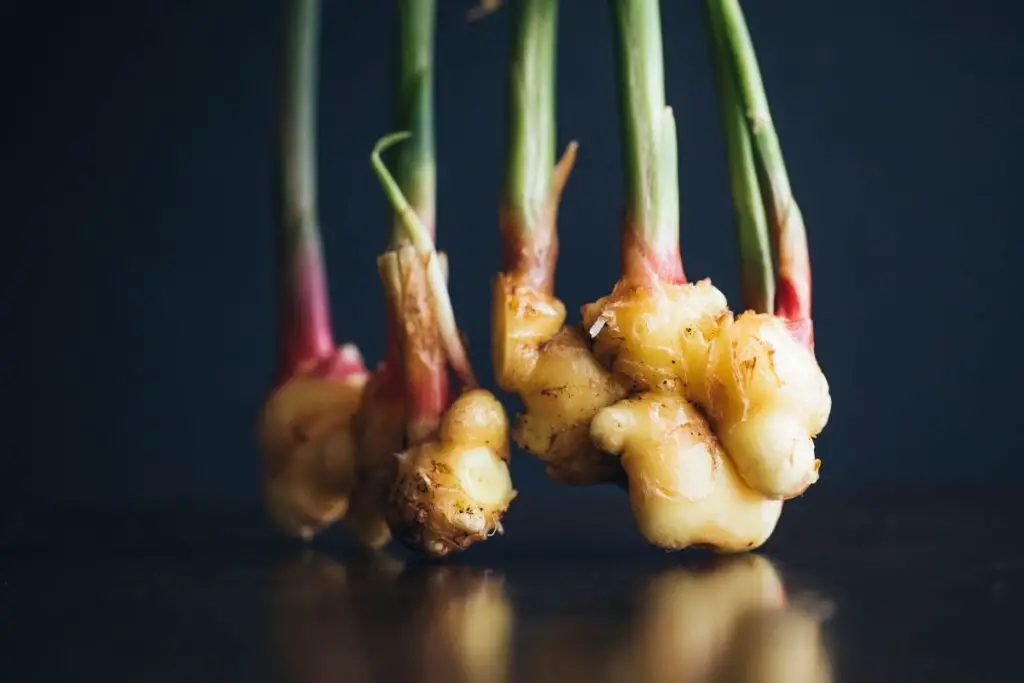
How much ginger should a person consume?
The amount of ginger consumption depends on whether you consume it daily, every alternate day, or every week.
Consuming gingers can keep you healthy in the long run. But there is a limit to consuming them.
Generally, an individual should not consume more than 4 grams of ginger daily.
Even if you are healthy and can intake more than 4 gms, you should not consume more.
4 gm is the maximum amount. 2-3 gm is an average amount.
Women going through pregnancy and lactation should have 1 gm of ginger.
So, in that case:
| Number of people | Ginger consumption |
|---|---|
| 1 | 4 grams |
| 2 | 8 grams |
| 4 | 16 gms |
| 6 | 24 gms |
| 8 | 32 gms |
The quantity of ginger consumption can vary if:
- People consume less than 4 gms.
- People consume them with breaks, like 1-2 days, and also use them for cooking.
- If there are any pregnant women present in the family.
How much ginger does a family need to suffice for a year?
Depending on the information given above about the consumption rate of ginger:
| No. of family members | Ginger consumption in a year |
|---|---|
| A family of 2 | 2920 grams |
| A family of 4 | 5840 gms |
| A family of 6 | 8760 gms |
| A family of 8 | 11,680 gms |
For example, you are a single member consuming 4 gms of ginger daily.
For one year, you will need only 1460 gms of ginger.
In that case, if one plant produces 200 gms of ginger, you need to plant 6-8 rhizomes to receive nearly 1500 gms of ginger.
It won’t be a problem if you get a little more ginger.
You can store and use them later.
Now, you may increase the rhizome number according to the members present in your family.
All these amounts may differ depending on person to person.
The average consumption rate should be 4 gms.
For instance, an individual might not consume 4 gms daily.
Or, in a particular year, the family doesn’t need that much ginger because maybe someone is pregnant in their family.
There could be several situations where the amount might decrease.
But, it won’t increase because I have considered 4 gms of ginger for a single person and then shared the information.
The details provided here are approximate.
More or less, this amount of ginger should be enough for a family.
Consider all these things to know how much ginger you should plant for your family annually.
How much ginger should I plant?
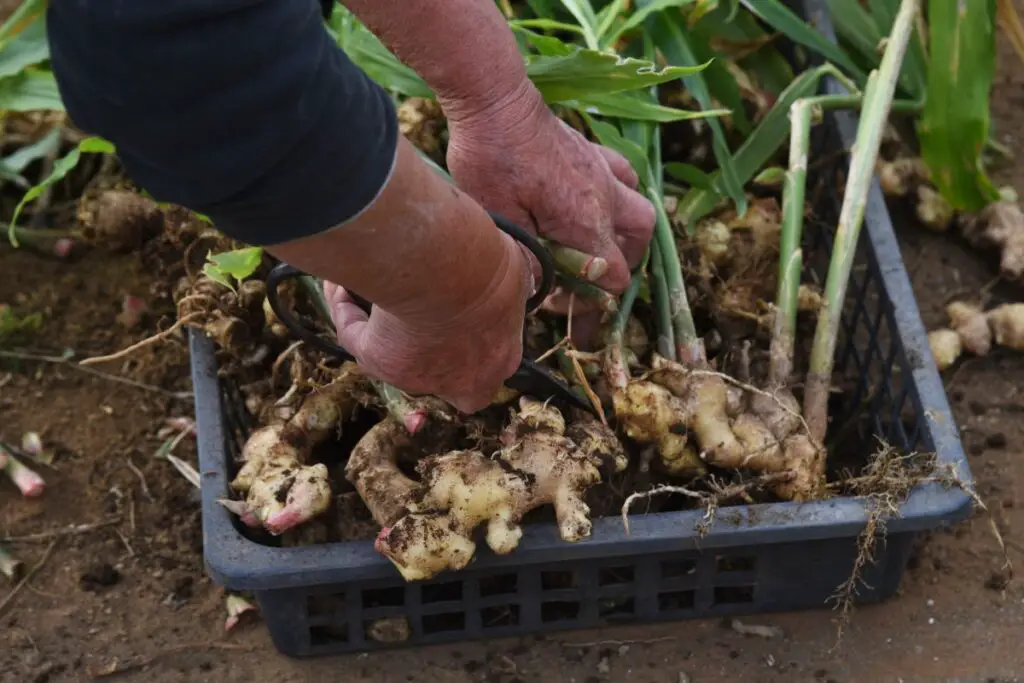
The amount of ginger to be planted depends on several factors, like the space in your garden, the pot you use, the space you maintain between the rhizomes, etc.
Generally, there must be a space of around 6-8 inches between each rhizome you plant.
Again, depending on the harvest methods, you can increase or decrease the distance.
If you want to harvest the whole plant and all the rhizomes, then 6-8 inches are fine.
You can reduce the distance if you want to harvest 4 months after planting.
But, if you want to harvest some rhizomes and let the rest remain in the ground, you must increase the distance to around 10-15 inches.
If you grow gingers in the ground, depending on the harvest method and your garden space, plant only one rhizome per square foot.
Keep a distance of 6-8 inches in between.
If you keep a 4-inch space between the rhizomes, you can plant 2 rhizome pieces in one square foot.
So, for example, if you have a 10-square foot area in your garden, you can plant 10 rhizomes with 6-8 inch space or 20 rhizomes with 4-inch space.
Sometimes, ginger plants are planted over the ridges.
Here, you can plant the rhizomes 10 inches apart.
In such conditions, you can plant around 840-1700 kgs of rhizomes in one hectare.
You will receive around 10-25 tonnes per hectare.
If you have one-acre space, you can plant 1000-1100kgs of ginger seedlings.
In that case, the average yield can be 6-10 tonnes per acre.
If you grow rhizomes in pots, you should plant 1 rhizome per pot.
If the pot is very big and shallow, you can plant 2 rhizomes in a pot.
However, having one rhizome in a single pot is always better.
It will allow the rhizomes to develop properly without any struggle.
With proper space, you will receive healthy gingers with ideal rhizome sizes.
Looking for gardening supplies? We have tested 100's of products before recommending them to you guys. Check out our best pick below:
| Image | Gardening Supplies | Best Price? |
|---|---|---|
 Top
Top Top
Top | Raised Garden Bed Kit | Check On Amazon |
 | XLUX Soil Moisture Meter, Plant Water Monitor, Soil Hygrometer Sensor for Gardening, Farming, Indoor and Outdoor Plants, No Batteries Required | No Results |
 Top
Top Top
Top | 82 Pcs Garden Tools Set and Extra Succulent Tools Set | Check On Amazon |
 | Joeys Garden Expandable Garden Hose with 8 Function Hose Nozzle, Lightweight Anti-Kink Flexible Garden Hoses, Extra Strength Fabric with Double Latex Core, (50 FT, Black) | No Results |
 Top
Top Top
Top | Dual Chamber Compost Tumbler | Check On Amazon |
 Top
Top Top
Top | Sunnyglade Plant Stakes | Check On Amazon |
 Top
Top Top
Top | Organic Cold Pressed Neem Seed Oil | Check On Amazon |
 Top
Top Top
Top | Mighty Mint Gallon :-Insect and Pest Control Peppermint Oil | Check On Amazon |
 Top
Top Top
Top | Scotts DiseaseEx Lawn Fungicide | Check On Amazon |
 Top
Top Top
Top | Jacks Classic 20-20-20 All Purpose Fertilizer | Check On Amazon |
 Top
Top Top
Top | 30,000 Seeds Pollinator Attracting Wildflower Mixture | Check On Amazon |
 Top
Top Top
Top | Survival Vegetable Seeds Garden Kit-Over 16,000 Seeds | Check On Amazon |
How much ginger can one plant produce?
Whenever you plan to grow ginger, you might have wondered about the fact that how much can a single plant produce.
It helps you know how much ginger you need and how much you should plant.
Gingers are grown from rhizomes.
The rhizomes are cut into pieces, around 1-2 inches, and planted in the ground.
From each rhizome emerges a new plant with leaf shoots.
In the beginning, the plant will be around 10gms and 25 mm in length.
One single rhizome can produce 200gms of ginger.
So, if you have one-hectare space, you can plant around 840-1700 kgs of ginger rhizomes.
You will receive about 10,000-25,000 kgs of ginger rhizomes.
How many months does it take to grow ginger?
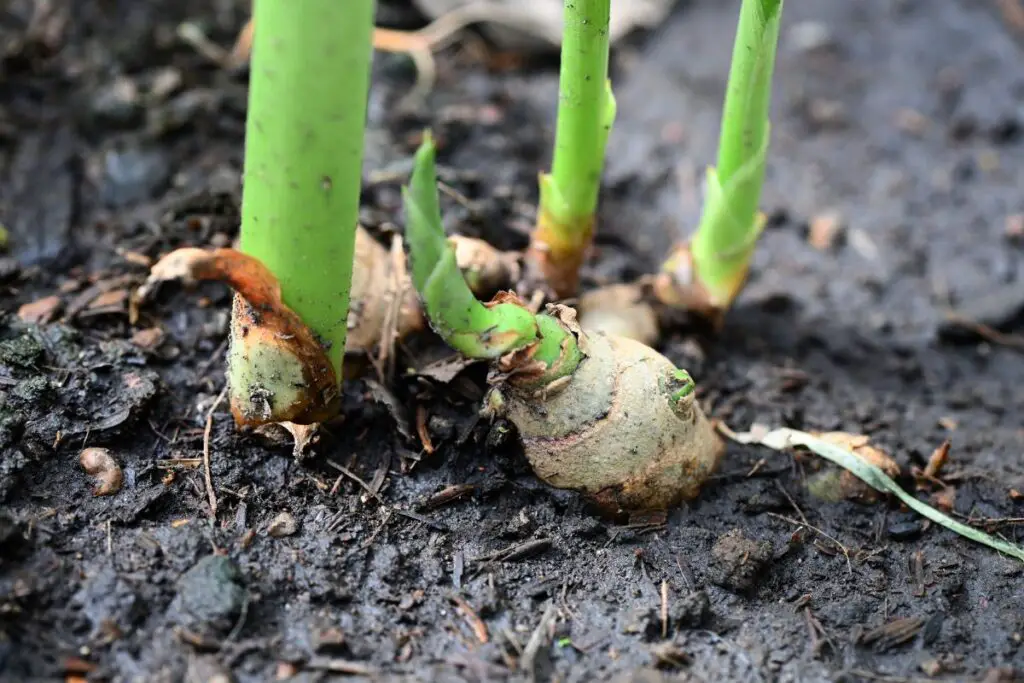
When planted in the early spring, ginger matures 8-10 months after planting.
Though you can pick up ginger anytime during the maturity stage, you will receive the best gingers after 8-10 months.
You can collect them after 2-4 months.
In that case, you will receive young ginger greens.
These gingers will be smaller and have less taste and flavor than the matured ginger.
After picking them up, choose ideal rhizomes to replant again in the next season and plant them properly.
How should ginger be planted?
Ginger plants are grown from rhizomes.
A plant sprouts out of the eye or node of the rhizome.
For adequate sprouting, you must prepare the soil bed properly.
Ginger growth is differentiated into two parts – commercially grown ginger and ginger grown at home.
Since we don’t know how the gingers are grown commercially, we will discuss the methods of growing them at home.
Home-grown gingers are the best.
You can control the location, light, water, fertilizer, and temperature.
You will receive healthy ginger that is free from all growth inhibitors.
But, if you are a beginner, how will you get the rhizomes for growing ginger?
You can grow the store-bought gingers without any issue.
You should check and collect disease and pest-free gingers to receive healthy gingers. The rest is easy.
Now, let’s see how to plant and grow them.
Steps to planting ginger rhizomes
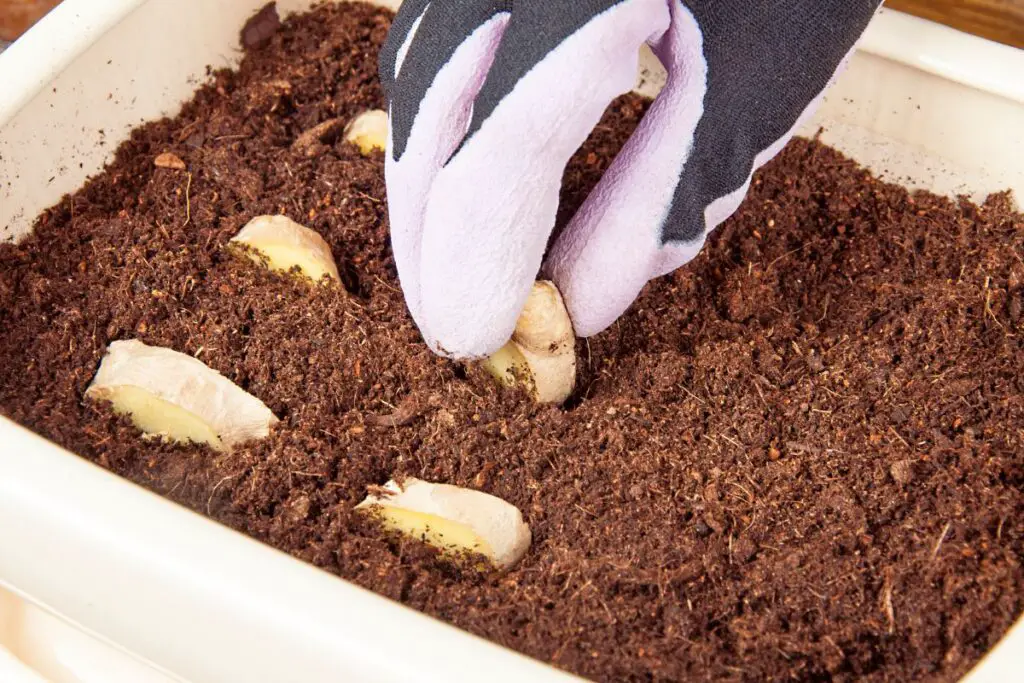
Here is a step-by-step guide on planting ginger rhizomes.
1. Divide the rhizomes.
Gingers have awkward shapes and sizes.
You have to cut them into pieces around 1-2 inches with the skins.
Make sure that each piece has one eye or node.
An eye or node is the place from where the plant will sprout.
2. Soak the rhizomes.
If you can’t see the eyes, soak the rhizomes in water for 3-4 hours and place the rhizomes over tissue or absorbent paper to soak the excess moisture.
Keep the rhizomes in a plastic zipper bag and wrap them in a cloth.
Check the rhizomes after every few weeks for sprouting.
Expect sprouting after 1-2 weeks.
The step is optional.
If you want to speed up the sprouting process or you can’t see the eyes, this process is fine.
Otherwise, prepare the bed and plant the rhizomes.
3. Provide the ideal conditions.
Find a location where the sunlight is dappled or has partial shade.
Add compost to the soil to increase its quality, drainage, and fertility.
Since gingers are heavy feeders, compost keeps them healthy in the long run.
Now, place the rhizomes 2-4 inches deep into the soil.
Make sure that the eye or sprouted part is placed in the upward direction.
That is the place from where the plant will come out.
Maintain a distance of at least 6-8 inches.
If you wish to keep the rhizomes in the ground throughout the year, maintain 10-15 inches of space.
It will give the rhizomes enough space to develop well.
Best growing conditions for ginger
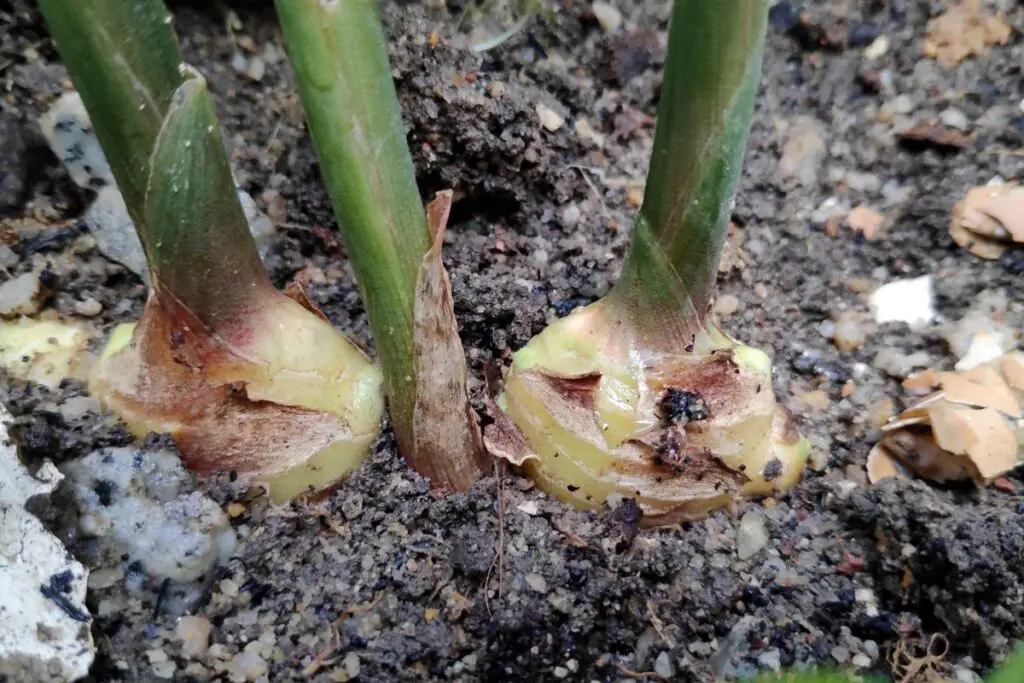
To encourage the gingers to produce at their best, you have to mimic their native land conditions, i.e., the rainforest environment.
Ginger will grow best when grown over moist, fertile soil that is protected from the sun’s heat.
- Make sure that gingers don’t receive any direct rays of the sun, especially the afternoon sun. It will dry up the plant and the rhizomes and kill them all.
- Water the plant to maintain consistently moist soil all the time. But also allow the top inch of the soil to dry out.
- Choose sanitized, well-drained fertile soil. Solarize the soil for 40 days before planting and remove all the old plant materials and debris. Add some compost to the soil to improve drainage, retention, and fertility.
- Feed your plant once a month with a liquid fertilizer throughout the growing season or with slow-release 2-3 times per year in the growing season.
- Gingers grow best when the air temperature is 75-85°F or above, and the soil temperature is around 75°F. Protect the rhizomes in winters, especially if the temperature drops below 50-60°F. Even if you grow hardy gingers, you must protect them from frosty weather.
- Ginger loves high humidity ranging between 70-90%.
- Harvest ginger whenever you want. But for the best rhizomes, the best time is after 8-10 months.
In what climate do ginger rhizomes grow best?
Tropical humid climates are the best for gingers.
You can also grow gingers in the subtropical and some temperature zone areas.
Since gingers love moisture, they grow best in the tropical rainforest areas where the rainfall is intense, and the weather is humid.
It maintains the ginger plants’ humidity level in the air and the ground moisture.
The moisture in the ground keeps the soil soft, which further allows the ginger plants to have large, tasty, and healthy rhizomes filled with moisture.
Gingers don’t grow very thick, deep, or extensive roots like the big trees.
They have rhizomes that are connected with fat strings.
If the ground is hard, then rhizomes will begin to come out of the ground.
They will dry up and die if exposed to the full sun and harsh weather outside for a very long time.
However, high humidity levels can give rise to various fungal infections.
Bacterial infection chances are higher in colder climates than in hotter climates.
Gingers don’t mind if they get 2-3 hours of direct sunlight.
Heat and humidity can avoid these infections.
Also read: When To Plant Ginger Roots?
Does organically grown ginger have more yields?
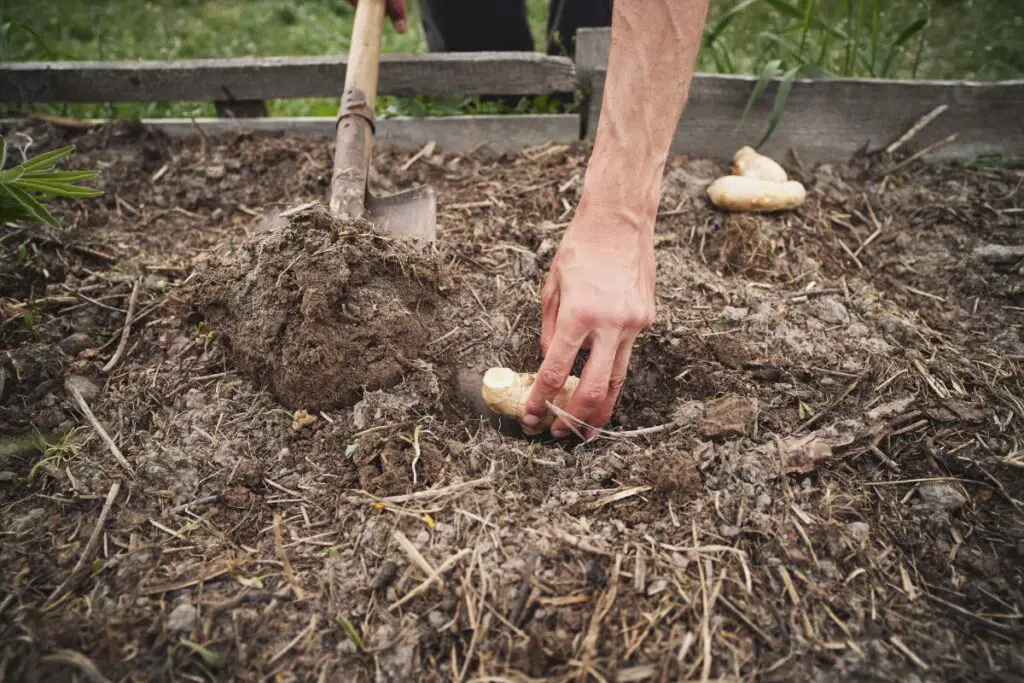
Usually, the gingers grown with chemical support produce more rhizomes from a plant than the organically grown ginger.
But, the quality and benefits of organic gingers can overcome the ginger quantity grown from chemical support.
The benefits of growing ginger without any chemical product usage are more satisfying and healthy than those grown with inhibitors and lots of chemical fertilizers.
However, not using any commercial fertilizers can bring you fewer rhizomes.
But planting a little more will yield the same result as those grown with chemical fertilizers.
You can replace commercial fertilizers with organic and natural ones like manures, fish emulsion, seaweed, etc.
Commercial food growers spend a lot of money using chemical fertilizers and other plant supports.
But in organic gingers, these expenses are not required.
So, your money gets saved. So, this is an advantage.
However, growing crops with chemical and other advanced support can increase the yield.
Letting the gingers grow organically and naturally is the best option.
But that doesn’t mean that using chemical support is bad.
Growing ginger organically doesn’t only have less yield, but it also takes time.
The growers try to grow them in more amounts faster so that people can get them at any time whenever required.
Final thoughts
Growing ginger is very easy. One plant can produce around 200gms of ginger. Depending on this, plant gingers as per your convenience.
To keep a 6-8 inch space between the rhizomes, plant one rhizome measuring 1-2 inches per square foot. If you keep a 4-inch space, plant two rhizomes per square foot.
If you want to get more gingers in a short time, you can take chemical support. Otherwise, grow them organically.
The best conditions for growing ginger are filtered sun, moist, well-drained, fertile soil, regular fertilizing, warm temperatures, and high humidity.
Though you can grow ginger in any climate, tropical and subtropical are the best. The next better option is temperature zones. You can grow in colder climates, but fungal development is higher.
Reference: Ginger Production, Texas AgriLife Extension, USDA, Wikipedia
